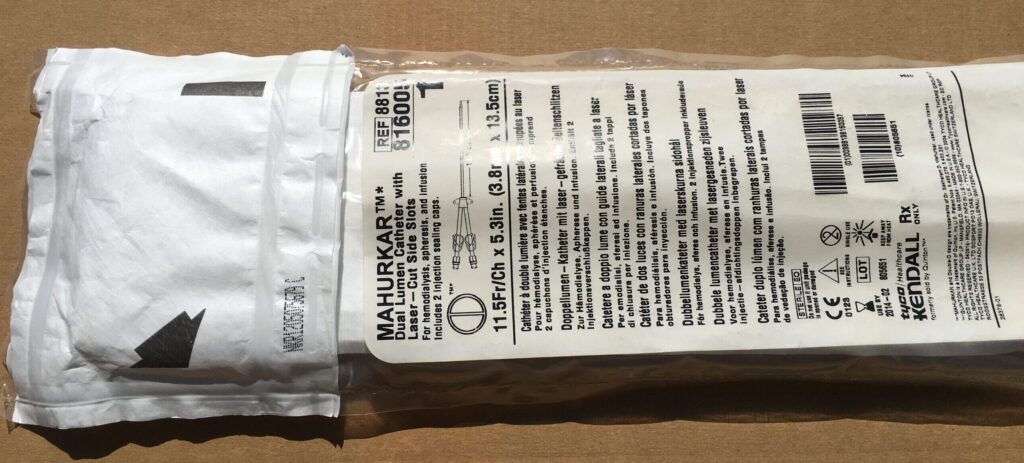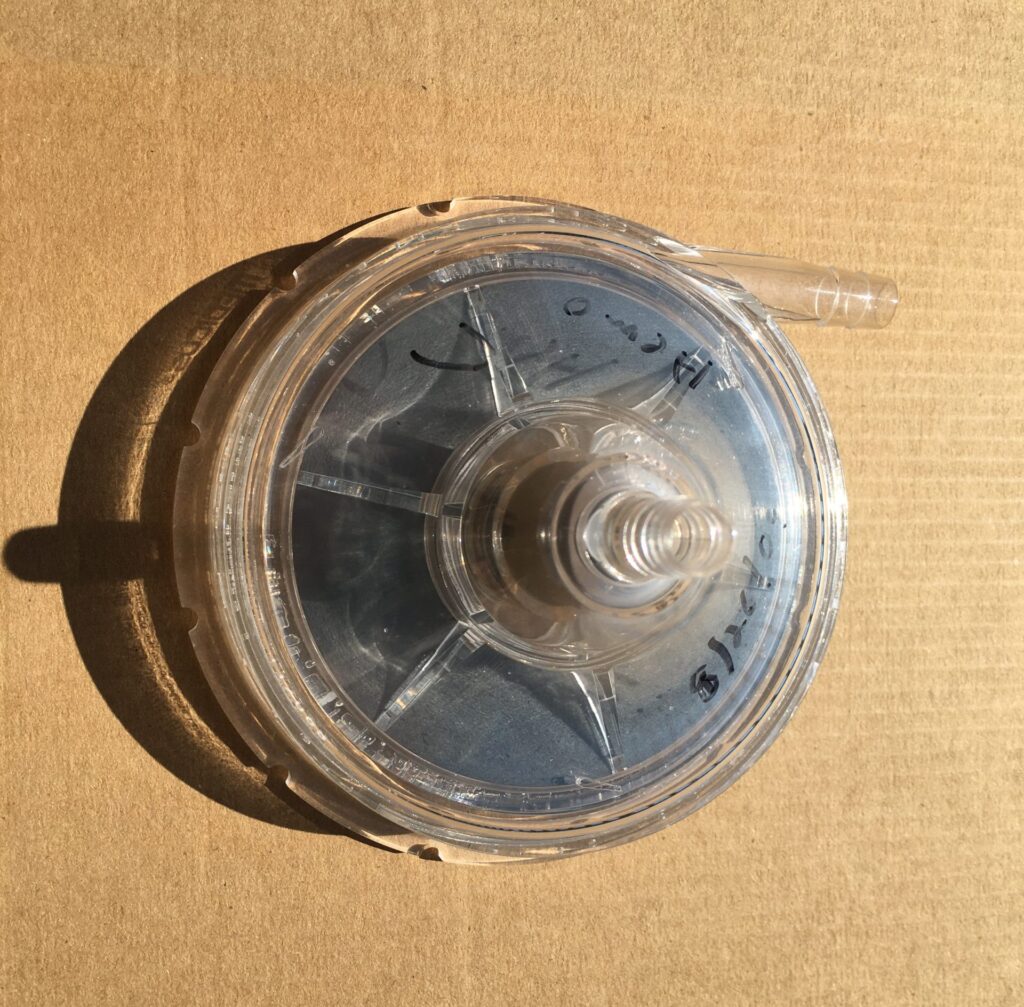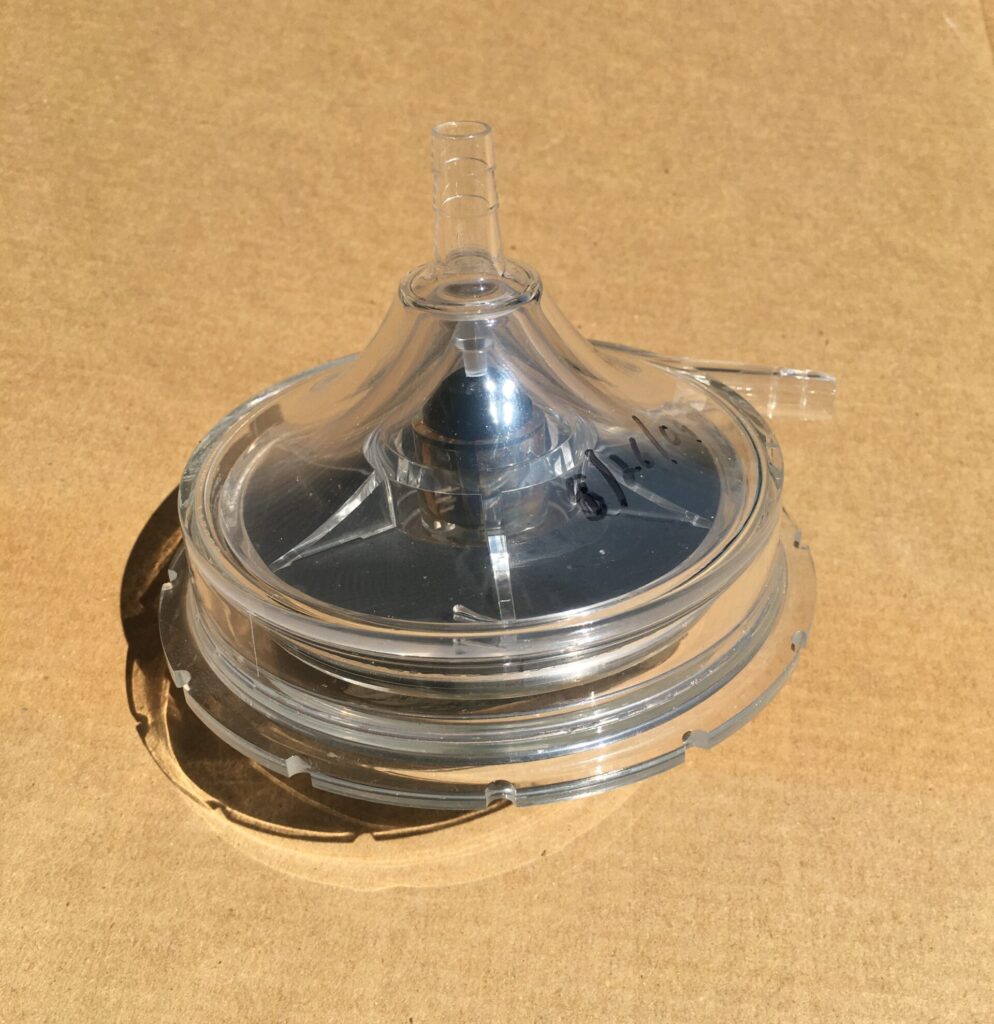The image below is a double lumen central venous catheter that was removed from its sterile package. This is the type of catheter that would be used for the treatment of severe carbon monoxide poisoning or for emergency hemodialysis. In this specific catheter, blood is removed from a side port located 3.5 cm from the catheter tip and exits via the red-colored connection. Blood is returned to the patient via the blue-colored connection and leaves the catheter from a side port located 2.0 cm from the tip of the catheter. This particular catheter was acquired many years ago as a sample. Several improvements in the design of these type of catheters have been made since that time. (See below.)

The image below is a contemporary double lumen catheter that is still within its sterile package. The “French Scale” or “French Gauge” is commonly used to measure the size of a catheter. The catheter shown is 11.5 French (11.5 Fr) and a catheter of this size can achieve consistent flow rates up to 350 ml/min. It should also be noted that a higher blood flow rate can be achieved by using a catheter of an overall shorter length. This is due to a lowering of the flow resistance which is a principle that is well-known in fluid dynamics.

The features of a 13.5 French catheter as described by its manufacturer follow.
MAHURKAR™* 13.5 Fr High Flow Dual Lumen Acute Dialysis Catheter, 13.5 cm, Straight Extensions, Kit. Indications: Hemodialysis, Apheresis and Infusion. Average Flow: 450 mL/min.
The MAHURKAR™* 13.5 Fr high flow dual lumen catheter offers one of the largest internal diameters available on the market to maximize flow rate for acute dialysis patients. This family of high flow dual lumen catheters is indicated for hemodialysis, apheresis and infusion. These catheters are available in straight extension, curved extension and pre-curved catheter options and kit, tray (IC Tray) and safety tray (PASS Tray) configurations.
With one of the largest internal diameters available, MAHURKAR™* 13.5 Fr high flow catheters are recommended for high flow acute hemodialysis, apheresis and infusion. The catheters have unique laser-cut side slots to minimize potential for positional occlusion and the likelihood of clot formation by minimizing debris attachment. The thermosensitive material provides optimal stiffness during insertion and softens up to 50% post-insertion for vessel conformity and patient comfort.
The image below is that of a commercially available centrifugal blood pump head. Centrifugal blood pumps have the advantage of not generating pulsation when in use. The priming volume of blood can be as low as 50 ml or a maximum of 80 ml. The input and output ports are clearly visible.

The image below is an angled view of the same centrifugal blood pump head shown above. Blood flow is achieved by a short stack of magnetic plates which spin during its operation. The six “paddles” attached to the top plate do the actual pushing of the blood. The paddles are easily seen, and the plates are at least partially visible.
